|
Avro Anson Mk.I
Post War Markings
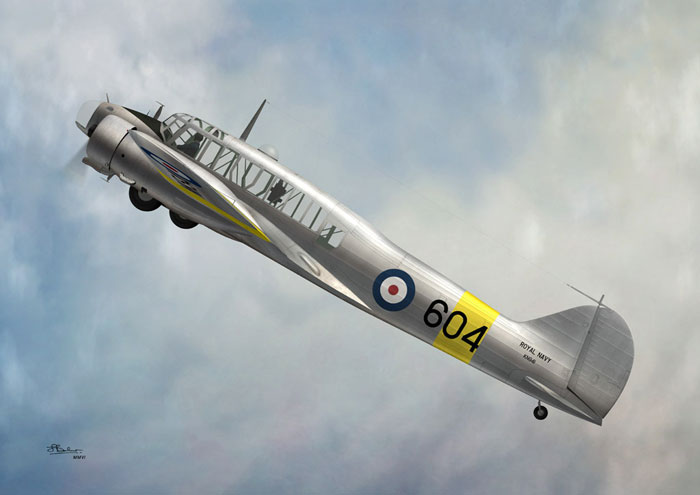
Classic Airframes, 1/48
scale
S
u m m a r y
|
| Catalogue Number: |
4121 - Avro Anson Mk.I Post War
Markings |
| Scale: |
1/48 |
| Contents and Media: |
51 parts in grey styrene; 68 parts in cream colored
resin; 15 clear injection molded parts; printed clear
acetate sheet (instruments); instructions; decal sheet and
painting guide for five aircraft |
| Price: |
MSRP
USD$55.00 |
| Review Type: |
FirstLook |
| Advantages: |
First time available as an injection-moulded kit
in this scale;
large and impressive; excellent surface detail including
very nice fabric texture, high quality plastic moulding;
thin, clear, cleverly designed and separately packed clear parts; impressively detailed resin parts;
six interesting and varied marking choices. |
| Disadvantages: |
Some modelling experience helpful for preparing
resin parts; a bit of flash present; a little extra time required for alignment and perfect fit. |
| Recommendation: |
Highly Recommended |
Reviewed by
Brett Green

Classic Airframes' 1/48 scale Anson Mk.I is available online from Squadron.com
The Avro Anson was derived from the civilian Model
652 transport aircraft. In 1936, the Anson earned the distinction of
being the both the first monoplane and the first type with retractable
undercarriage in RAF service. The Anson initially performed the
anti-submarine and reconnaissance roles, but was relegated to navigation
and gunnery training duties as the war progressed. Perhaps its most
important responsibility was as the nursery to new pilots and aircrew
throughout the Commonwealth under the Empire Air Training Scheme.
Despite its important role in the Second World War
and beyond, and a total production run in excess of 10,000 examples, the
Avro Anson is a sadly neglected subject in styrene. Before now, there
has not been a single injection-moulded Anson kit in 1/48 scale, and
only the ancient Airfix Mk.I in 1/72. Classic Airframes' all new Anson
family is
therefore a real breath of fresh air to RAF and Commonwealth aviation
fans.
Classic Airframes has now released an Anson Mk.I in
post-war guise. A number of Ansons were re-engined with Armstrong
Siddeley Cheetah XIX powerplants featuring smooth cowlings, and some
were also fitted with a clear nose. The Anson on display at the Imperial
War Museum Duxford is an example of a smooth-cowled Mk.I with fabric
wings.
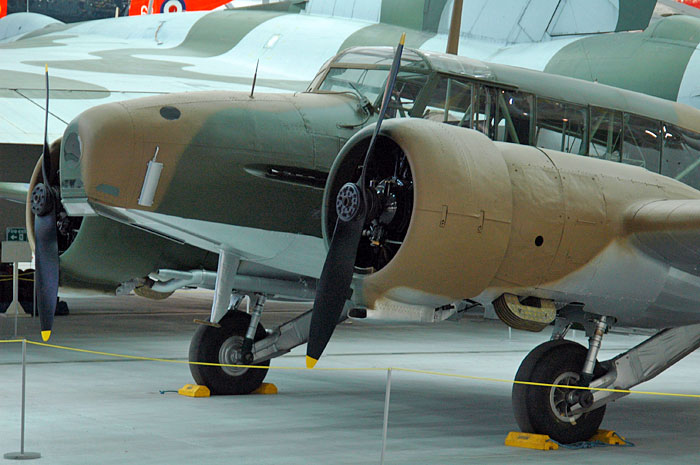
Click
the thumbnails below to view larger images:
[../../../photogallery/photo00025606/real.htm]
This new post-war Avro Anson Mk.I kit
comprises 51 parts in grey styrene; 68 parts in cream colored resin; 15 clear injection molded parts; instructions; plus a decal sheet and painting guide for
seven aircraft. The kit contents are essentially the same as the earlier
four releases with the exception of the engine, cowlings and clear
parts.
Plastic parts are presented to a very high standard.
Moulding quality is excellent with a satin finish to the surface. There are no moulding imperfections on
any of the exterior surfaces. The surface texture mostly represents
fabric, and it is very well done. I especially like the restrained
approach adopted on the fuselage and fin. Where appropriate, panel lines are crisply recessed
and
consistent while other structural features stand proud of the fabric
surface. The overall effect is quite convincing.
The new engine and nacelles are supplied as plastic
parts.
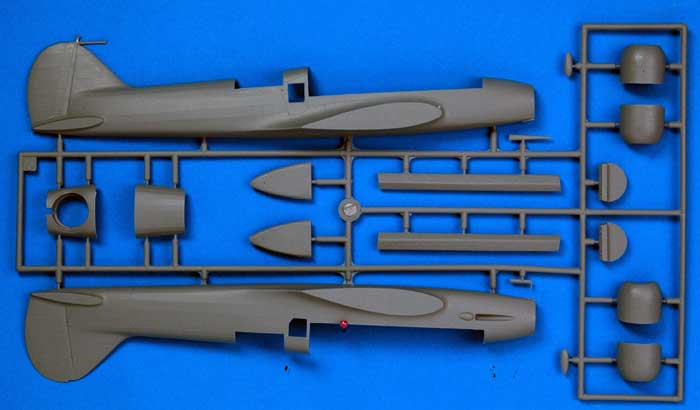
Click
the thumbnails below to view larger images:
[../../../photogallery/photo00008707/real.htm]
Resin parts are very nicely detailed. The bulk of these details are
for the cockpit, including extensive framing inside the fuselage, but
the undercarriage bays are
also supplied in resin.
The high level of detail in the cockpit is justified by its
visibility inside the large fuselage windows. Classic Airframes supplies
seats, navigator's table, radio gear, dickie seat next to the pilot and
cushion for a prone observer in the nose. The turret is a mini-model in
its own right, with 13 parts in grey plastic, resin and clear.
Some of the parts are cast onto fairly stout blocks so a combination of a
good razor saw and caution will be required when preparing these resin
components.
Clear parts are well moulded and distortion free - very important for
this glasshouse canopy and fuselage. The windscreen is moulded to part
of the forward fuselage, which will make painting easier. The long
windows for the rear cabin are also moulded as an integral part of the
mid-upper fuselage, adding strength and also minimizing the risk of
smudging these clear parts with glue during painting.
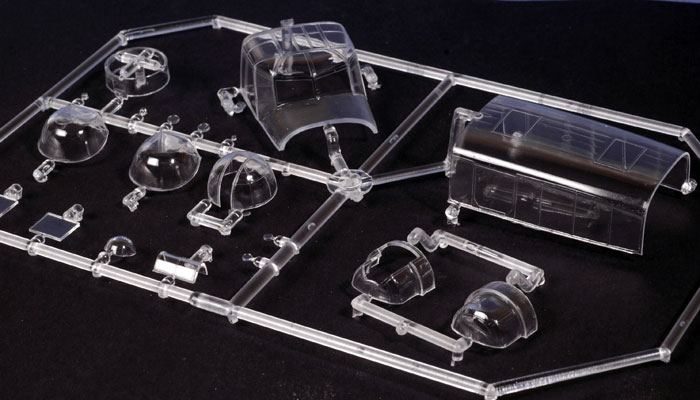
Options include glazed or covered nose cone, turret or
faired-over fuselage, landing lights, long ailerons and various avionics
alternatives (aerials, DF loop, astrodome etc). Control surfaces are moulded in place, with separate photo-etched hinges and actuators.
An entirely new style of turret is also included for the Dutch
marking option.
The kit is broken down conventionally - fuselage halves, wing halves
etc - but there are no locating pins or tabs. I strongly recommend that
wings and tailplanes are reinforced with metal or plastic spars. Sprue
attachment points are narrow, but there is a fair bit of flash on some
of the smaller parts.
The shape of the model looks accurate compared to published plans and
contemporary photographs.
Markings
Six interesting marking options are offered on the instructions:
-
Royal Navy 1952 in overall Aluminium
Dope with broad yellow stripes
-
Belgian Air Force in overall
Aluminium Dope
-
Portugal, 1947, in overall Aluminium
-
Israeli Air Force early 1950s in
overal Aluminium Dope with red fuselage and wing stripes
-
Dutch Air Force, late 1940s, finished
in overall yellow
-
RNAF around 1950 in RAF Dark Green,
Dark Earth and with yellow undersides
Click
the thumbnails below to view larger images:
[../../../photogallery/photo00013454/real.htm]
Decals are printed in perfect register, and colours look good.
Classic Airframes' 1/48 scale Anson is an impressively detailed kit
of one of the neglected workhorses of the Second World War and beyond. With a recommended price of USD$55.00,
it is quite a bargain too, especially considering the significant resin
content.
The relatively small number of plastic parts belie the complexity of
the kit. You will need experience before tackling this project
due to the extensive use of resin and the lack of locating pins.
However, with care and plenty of test-fitting, Classic Airframes' Anson
should not present much more of a challenge than most other twin-engine
mainstream kits.
You won't have to spend a cent on after-market accessories though,
thanks to the very high level of detail in the cockpit, and the ample
markings options.
I have already built the early version Anson Mk.I (below). It was a
pleasure to work on, and is impressively sized and striking with its
large windows revealing the nicely detailed interior. This new post-war
version shares most of the same parts, therefore should be similar to
build.
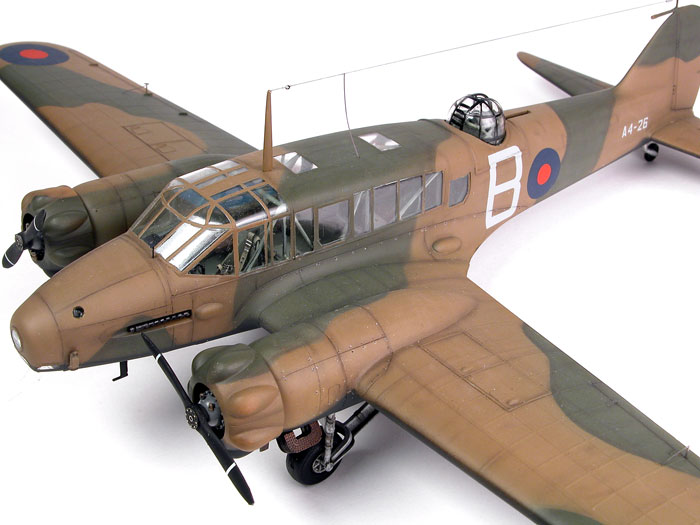
Highly Recommended to experienced modellers.
Thanks to
Classic Airframes for
the review sample.
Classic Airframes
kits are available worldwide through hobby retailers and from
Squadron.com
Review and Images Copyright © 2007 by
Brett Green
Page Created 26 April, 2007
Last updated 24 December, 2007
Back to HyperScale Main Page
Back to Reviews Page
|
Home
| What's New |
Features |
Gallery |
Reviews |
Reference |
Forum |